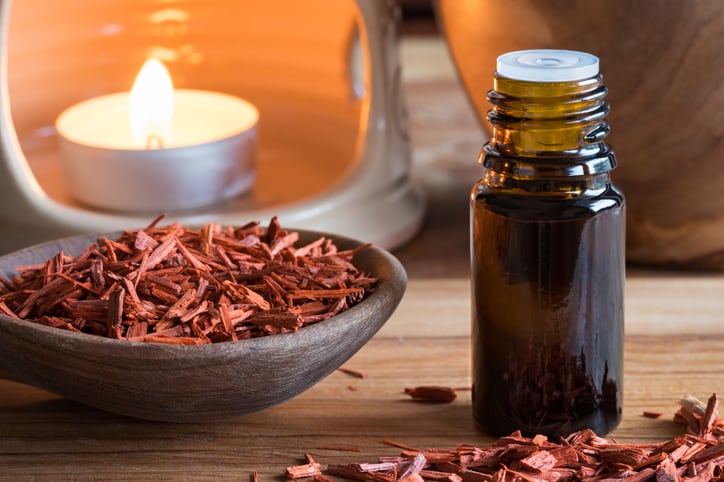A research team out of Mauritius, Australia and France, Kolanthan et al, recently published their most recent study on the topical application of sandalwood in Cosmetics with an in vivo study on blue light and pollution protection.
Kolanthan et al previously studied sandalwood’s antioxidant and anti-aging qualities in vitro and ex vivo which found sandalwood oil showed promise in protecting skin from both blue light and cigarette smoke.
In this most recent follow-up study, Kolanthan et al said they wanted to measure sandalwood’s real-world blue light and pollution protective potential as demand for these qualities in personal care products increases.
“As this urban lifestyle grows, more and more people are directly exposed to pollution caused by vehicle fumes, industries, cigarette smoke and others,” Kolanthan et al said. “To this end, frequent application of skincare products that act as an effective shield against the exposome, such as blue light and pollution, is crucial.”
Promising protective data for both pollutants and blue light
Kolanthan et al said the negative effects of pollution on the skin are well documented, including hyperpigmentation, premature aging, skin roughness and the disruption of the skin barrier function.
The effects of blue light on the skin are still under investigation, but Kolanthan et al said both ambient dust and blue light are capable of increasing oxidation levels. The research team tested sandalwood oil against the known antioxidant ingredient alpha-tocopherol.
While previous lab studies on sandalwood oil showed its ability to scavenge reactive oxygen species, this study tested its protective capabilities on healthy volunteers when exposed to blue light and pollutants in a clinical setting.
Kolanthan et al said sandalwood oil at 10% and 1% within a skin formulation performed better in protecting the skin than formulation with 0.5% of the control antioxidant.
“These results suggest that Indian sandalwood oil at a concentration between 1% and 10% protects the skin against the oxidative stress induced by ambient dust and blue light exposure,” Kolanthan et al said. “These results also confirm our previous studies, whereby sandalwood oil was reported to protect against oxidative stress in vitro.”
The team said the sandalwood formulations were both able to limit the contact time of the exposome on the skin and trigger intracellular or extracellular processes that slow the process of skin damage.
Sandalwood sustainability in the study
The Indian sandalwood used in the study was sourced from a plantation in Northern Australia to ensure the quality and sustainability of the ingredient.
Indian sandalwood sourced from India has posed a sustainability concern in the cosmetics industry since the mid-1970s when it was discovered that the sandalwood tree had been over-harvested and only 350,000 were still growing in the wild, according to Ezra D. Rashkow.
Several plantations are now growing sandalwood trees in Northern Australia, many of which have recently reached maturity and are now able to provide more sustainably sourced sandalwood ingredients.
Source: Cosmetics
Author: V. Kolanthan et al
Cosmetics 2022, 9(2), 35; https://doi.org/10.3390/cosmetics9020035
Title: Clinical Evaluation of Indian Sandalwood Oil and Its Protective Effect on the Skin against the Detrimental Effect of Exposome

